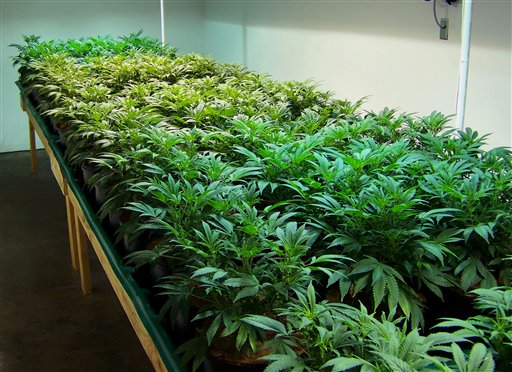 |
| Reviews and Templates for Expression We |
How Marijuana Prohibition Drives Up Energy Costs And Warms The Planet

CREDIT: Associated Press
U.S. marijuana growers have increasingly brought their farms indoors, in large part to remain hidden from law enforcement. But the industry comes at a significant carbon cost. A 2011 study by researchers at the Lawrence Berkeley National Laboratory found that the marijuana industry is responsible for 1 percent of U.S. electricity use, primarily because of resources associated with indoor cultivation and storage. In California, indoor cultivation accounts for 3 percent of the state’s energy use.
That finding was before two states legalized recreational marijuana, in addition to several more medical marijuana states. Now, Colorado growers with utility bills of $20,000 to $100,000 per month are warning that indoor growth may not be sustainable.
“Energy consumption in this business is pretty astronomical,” marijuana business owner John Kocer told CBS Denver. “As this industry expands at its current pace I do believe that we will be a tax on the energy grid: something has to change.”
Indoor marijuana cultivation requires indoor grow lights, in addition to temperature control and ventillation. Overall, it sucks up $6 billion in energy costs, and creates as much greenhouse gas as 3 million cars, according to Sustainable Business.
Marijuana growers cultivate indoors for several reasons. But one of the primary ones is to keep their business hidden from view. Even in states where marijuana is legal, growing marijuana outside would put their federally illegal operations right under the noses of passers-by. It also makes them vulnerable to theft from the still-vibrant illicit marijuana market.
So long as marijuana is federally prohibited and regulation is suppressed, this will be one of many adverse environmental consequences of illicit marijuana growing. Unregulated outdoor farms impose harms from unchecked forest clearing, filling and diversion of streams, use of toxic pesticides, and even road building.
One California county with a particularly high volume of pot growers took a novel approach to tackling this issue by issuing licenses to locally compliant growers, and using revenue from the licensing program to crack down on large-scale bad actors. But the program was forced to shut down, after the Drug Enforcement Administration raided the model grower for the county’s pot licensing program.
Washington’s new marijuana law sets out regulations for both indoor and outdoor growing, but those who produce indoors are permitted four harvests per year, while those who go outside are limited to two per year, prompting complaints from some that the rules favor indoor growth. Because the states are still facing a federal prohibition, and have committed not to allow their marijuana supply to flow into other states, they are still incentivized to keep growth contained.
Colorado initially intended to prohibit outdoor marijuana cultivation. But its new recreational marijuana regulations now allow outdoor facilities that have secure fencing and surveillance.
|
|
|
|
Copyright 2011 Energy and Technical Services Ltd. All Rights Reserved. Energyts.com |